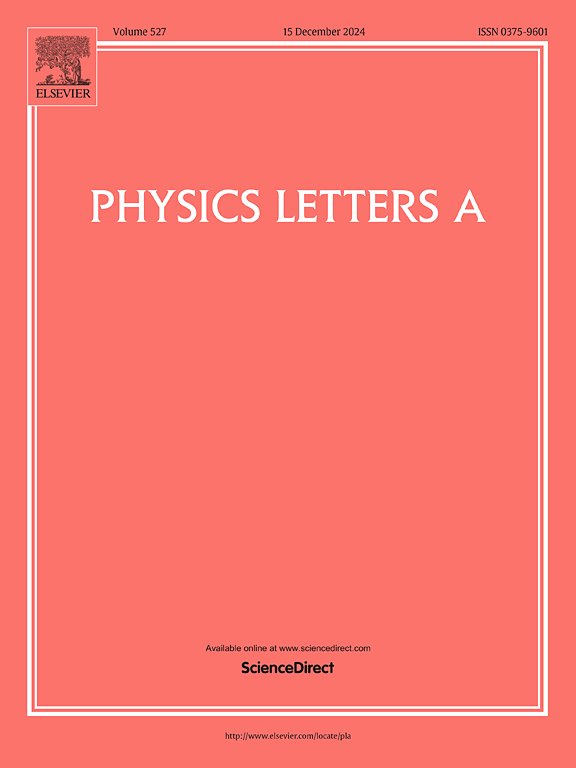Local and nonlocal Andreev reflections in graphene-superconductor hybrid structures based on tilted Dirac cone systems
IF 2.3
3区 物理与天体物理
Q2 PHYSICS, MULTIDISCIPLINARY
引用次数: 0
Abstract
We study the scattering processes, the local and nonlocal Andreev reflections in graphene-superconductor hybrid structures based on tilted Dirac cone systems. The Dirac theory of graphene was deformed, which is characterized by two parameters . This tilt deformation breaks the chiral symmetry of the energy band, and the tilted energy band makes the reflections and transmissions of electrons and holes show distinctive characteristics. We show that even if the incident angle is 0, the nonzero ζ will make both local and nonlocal Andreev reflections to be nonzero when (E is the excitation energy, and is the Fermi energy). Furthermore, as ζ approaches 1, the reflected electrons and holes are always perpendicular to the interface, regardless of whether or . This perpendicular reflection is another type of reflections besides the specular reflection and the retro reflection. The tilt dependence of the conductance curves can be used to extract information about the direction and magnitude of the tilt.
基于倾斜狄拉克锥体系的石墨烯-超导体杂化结构中的局域和非局域Andreev反射
研究了基于倾斜狄拉克锥体系的石墨烯-超导体杂化结构中的散射过程、局域和非局域Andreev反射。石墨烯的狄拉克理论被变形,表征为两个参数ζ=ζ(cos θ,sin θ)。这种倾斜变形破坏了能带的手性对称性,使电子和空穴的反射和透射表现出明显的特征。我们证明了即使入射角为0,当E比EF (E为激发能,EF为费米能)时,非零ζ也会使局域和非局域Andreev反射都是非零的。此外,当ζ趋近于1时,反射的电子和空穴总是垂直于界面,而不管E≠EF或E≪EF。这种垂直反射是除了镜面反射和复古反射之外的另一种反射。电导曲线的倾斜依赖性可以用来提取有关倾斜方向和大小的信息。
本文章由计算机程序翻译,如有差异,请以英文原文为准。
求助全文
约1分钟内获得全文
求助全文
来源期刊

Physics Letters A
物理-物理:综合
CiteScore
5.10
自引率
3.80%
发文量
493
审稿时长
30 days
期刊介绍:
Physics Letters A offers an exciting publication outlet for novel and frontier physics. It encourages the submission of new research on: condensed matter physics, theoretical physics, nonlinear science, statistical physics, mathematical and computational physics, general and cross-disciplinary physics (including foundations), atomic, molecular and cluster physics, plasma and fluid physics, optical physics, biological physics and nanoscience. No articles on High Energy and Nuclear Physics are published in Physics Letters A. The journal''s high standard and wide dissemination ensures a broad readership amongst the physics community. Rapid publication times and flexible length restrictions give Physics Letters A the edge over other journals in the field.
 求助内容:
求助内容: 应助结果提醒方式:
应助结果提醒方式:


